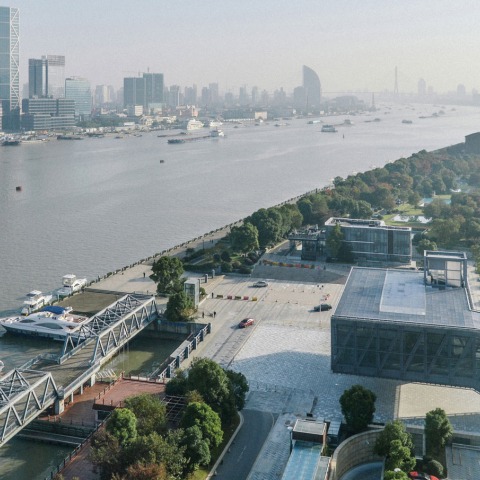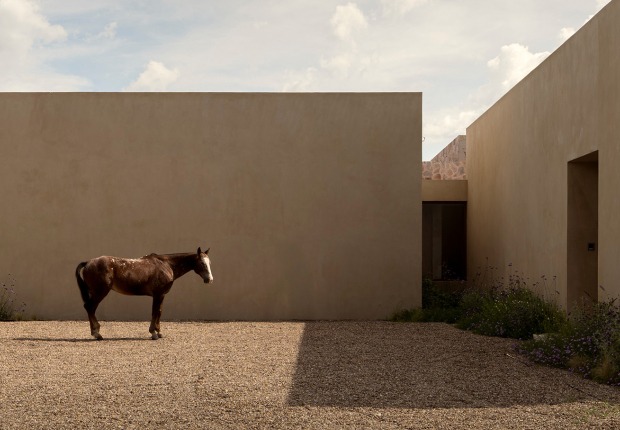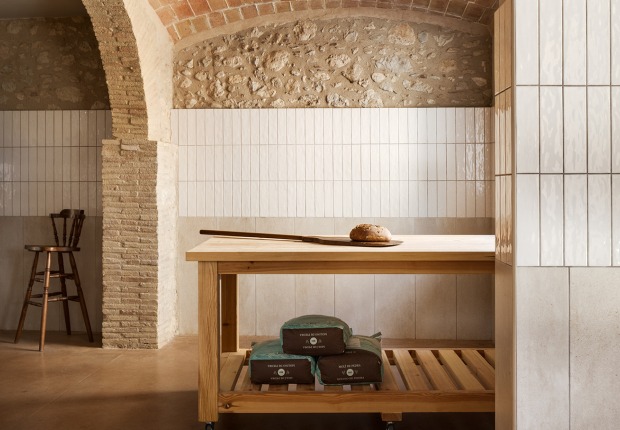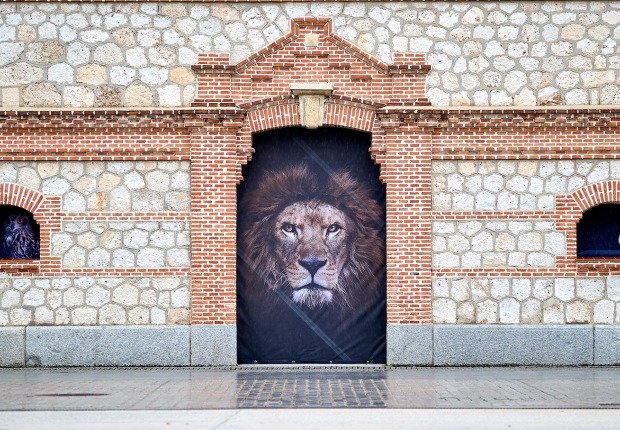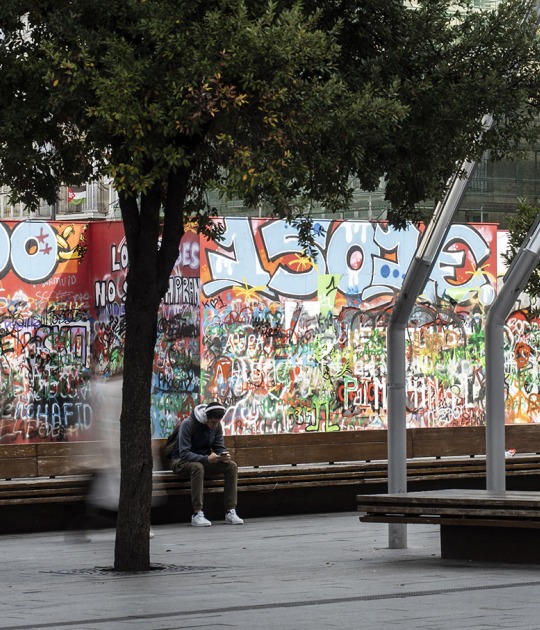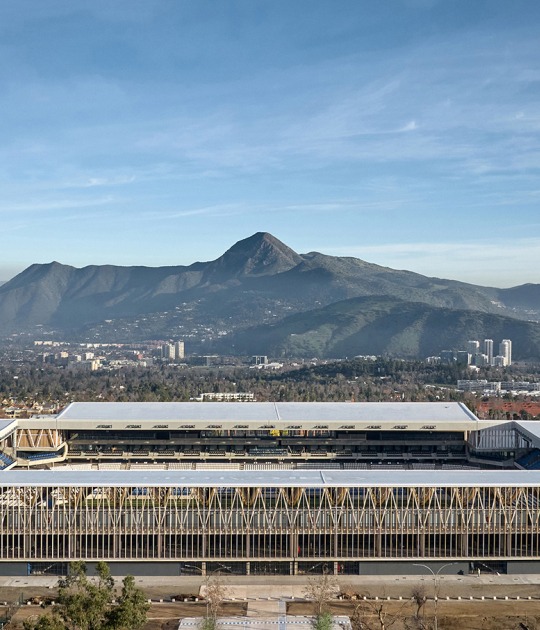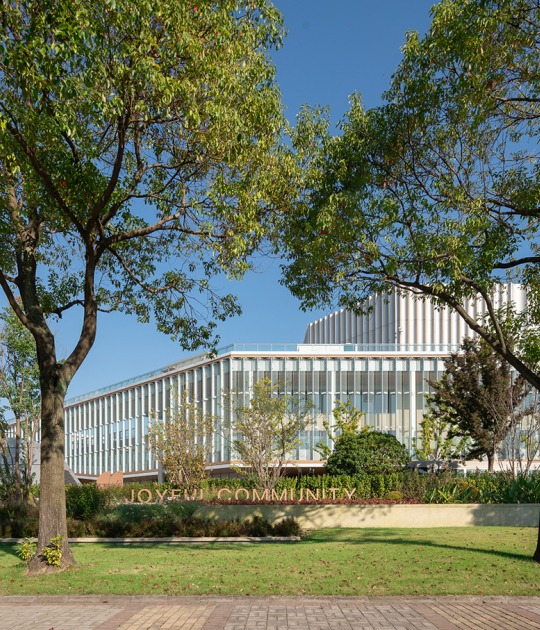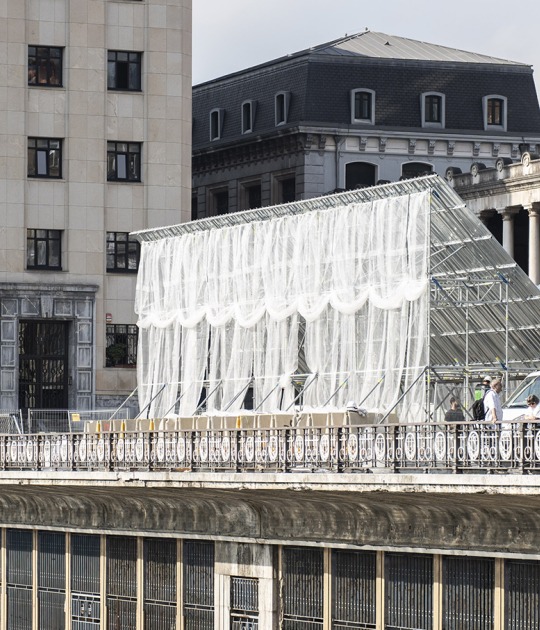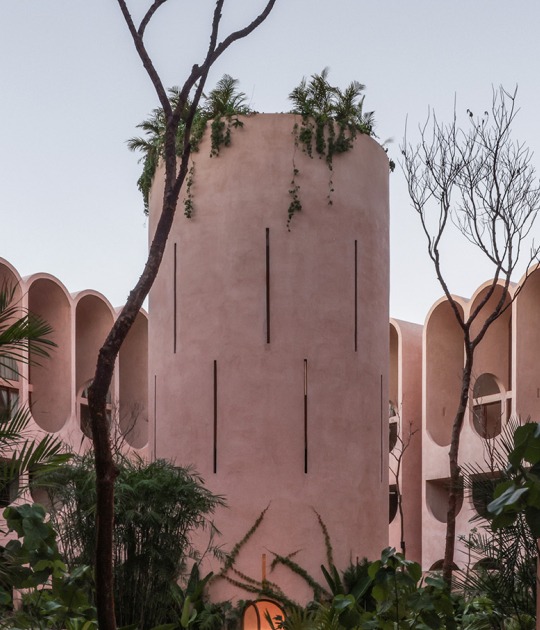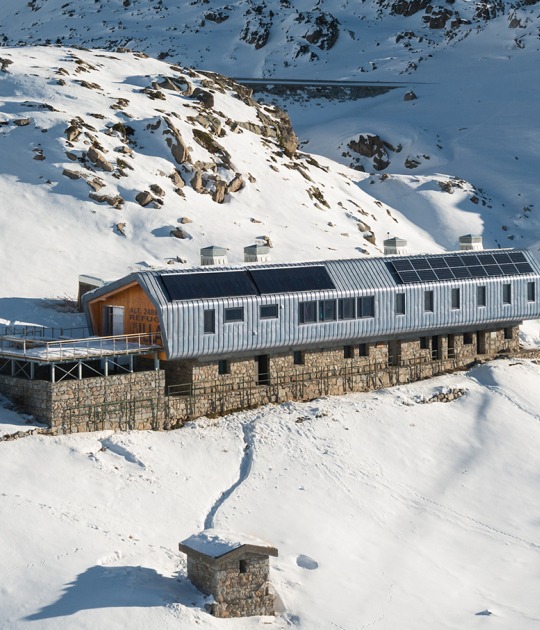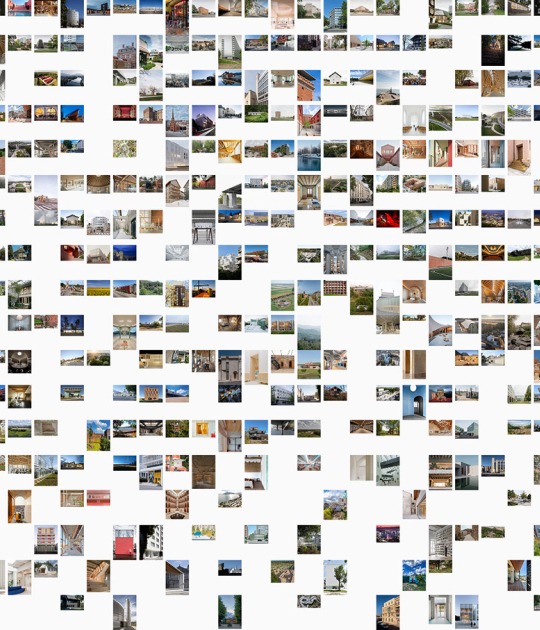Descripción del proyecto por OMA
Built along the Huangpu River, the main exhibition space is designed as a cantilevered box that hovers 8 meters above the ground, providing panoramic views of the waterfront and the Shanghai bund, and creating a covered open space underneath. Apart from exhibition spaces, the centre houses an auditorium, a foyer, an inclined walkway and a covered plaza, framed by the massing of the building. Furthermore, a new large open square is created on the waterfront that provides programmatic opportunities for film screenings, lectures, fashion shows, and concerts.
David Gianotten: “OMA is happy to complete its first project in Shanghai. We believe the building will act as a lantern of activity at the edge of the Huangpu River. Its activity will be highly visible from the water which connects to the history of the site as shipyard.”
The design of the building is inspired by the site's industrial heritage; it is wrapped in a bespoke metallic mesh that partially exposes the building's structure. Through this treatment, the facade intends to evoke images of the unfinished ship hulls that used to occupy the area.
With its public plaza and a large outdoor space formed by the slope of the ramp, the Exhibition Centre aims to function as an outdoor cultural and event space within the context of the financial district. Besides hosting seminars and exhibitions, the centre offers a sheltered area for more intimate public functions, a spatial typology that is rare in Shanghai.
The project was led by David Gianotten and Michael Kokora (now working independently), with Daan Ooievaar, Paolo Caracini and Ricky Suen. OMA is currently realizing various projects throughout Asia, ranging from retail and residential buildings to offices and masterplans in major cities in China, Korea, Taiwan and Indonesia.
